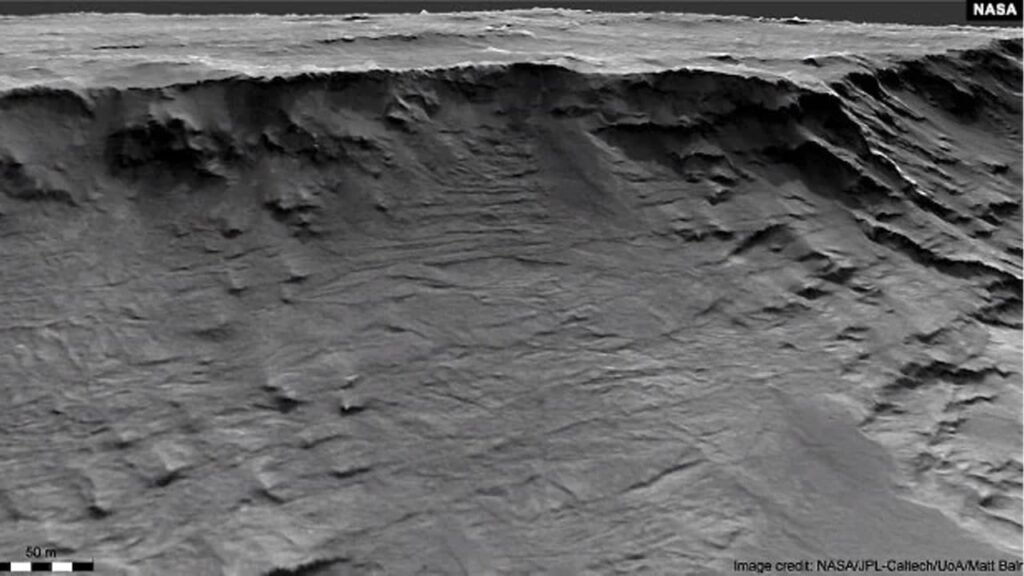Scientists have developed a new map to classify the best water supplies on Mars.
In potential exploration efforts on Mars, water is deemed a vital resource. The Red Planet holds vast volumes of water, scientifically claimed. But finding the best supplies from Earth isn’t easy.
NASA has been working for years to find the right sites for these waters. Much of the water on Mars remains in freezing temperatures as salt.
A recent report identifies the most possible regions of water ice and includes accurate charts. In Nature Astronomy, the research appeared recently. It’s a member of a Subsurface Sea Ice Mapping project or Dive.
NASA notes that the SWIM initiative puts together 20 years of data obtained by many Mars explorers of the agency. With funding from NASA’s Jet Propulsion Laboratory in California, researchers at the Planetary Science Institute in Tucson, Arizona, lead the field.

Gareth Morgan is a physicist who has helped direct the research at the Planetary Science Institute. He said “The aims of SWIM are to map the possible ice deposits that are buried and support the selection of human landing sites,” in a statement.
He added that ice on Mars is a vital resource that can be used for many purposes, including the availability of human drinking water, food plants and methane fuel, and respirable air. “But the most important thing is to supply fuel for Earth’s return voyage,” Morgan said.
Researchers have also worked with methods for producing fuel and oxygen using water ice on Mars.
In preparedness to send human beings, Richard Davis leads the efforts of NASA to locate money on Mars. He said the discovery of water supplies on Mars could also help to discover life near the water. “For humans to get beneath the surface and look for signs of microbial life, the next boundary to Mars,” David says.
NASA believes most scientists and engineers agree that beneath the polar regions of Mars in the northern hemisphere the most open subsurface ice remains. This latest map focuses on those regions — south of the polar but north of the equator — as they contain environments for human beings that are more favorable.

There will be faster spacecraft landings, too. The chart reveals two special regions on Mars that may potentially hold subsurface ice. In a field known as Arcadia Planitia, the first one is among the plains. Scientists claim that ancient volcanic flows have shaped the region. The other is in an area known as Deuteronilus Mensae, packed with glaciers.
The research found areas by five numerous methods which analyzed data sets from Mars explorers of past years. It included Mars Odyssey of NASA, Mars Identification Orbiter, and the Mars Global Surveyor.
Gareth Morgan clarified that the process was not intended to calculate water glace directly. Rather, it was supposed to forecast ice provision based on observed conditions. He said that factors like high hydrogen levels and high frequencies of radar waves might display ice. Researchers can also see how easily a surface changes temperatures.
NASA aims to use the latest findings to train for talks on future landings on Mars with top experts.

NASA recently announced it had also reached an agreement for the development of a potential Mars robotic mapping mission to look for water ice with international partners. The alliance involves the Italian, Canadian, and Japanese space departments.
Further mapping activities in the 2020s “could help to facilitate human missions to Mars as early as in the2030s,” said NASA. For the time being, officials at NASA expect to continue looking for the best location on Mars to send astronauts to support their operations, so that they can have ample local water ice supplies.

3 Comments
Pingback: NASA's new study says Life from Earth could Temporarily survive on Mars - Craffic
Pingback: Mars hiding an ocean of water under its surface, says scientists - Craffic
Pingback: Top 7 Space Stories of the week - Craffic